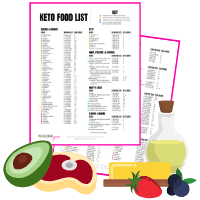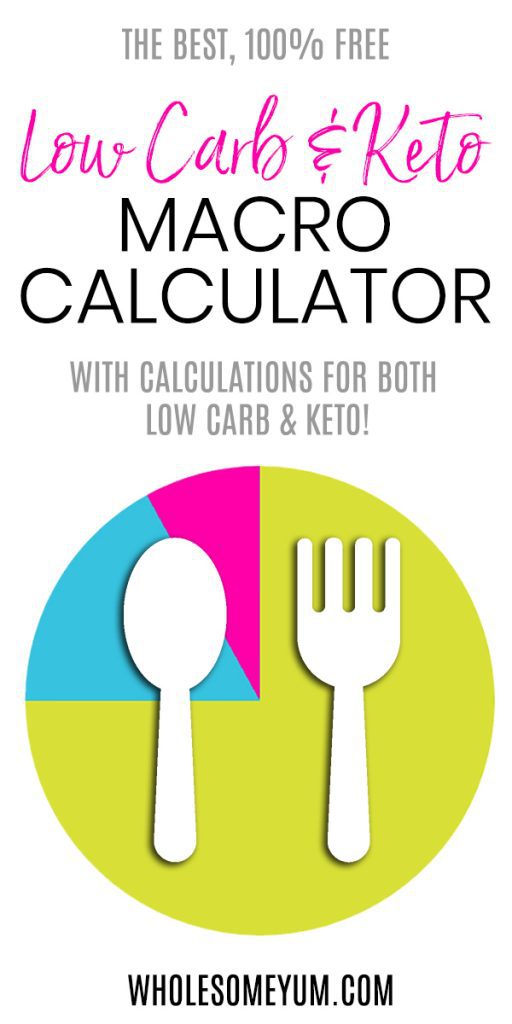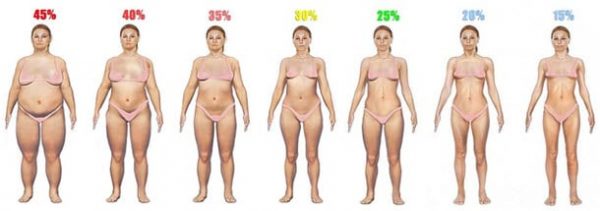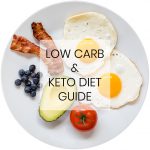How To Add Keto Macro Calculator To Blog Post

FREE PRINTABLE: LOW CARB & KETO FOOD LIST
GET IT NOW
This post may contain affiliate links, which help keep this content free. (Full disclosure)
- How To Calculate Macros
- The Best Low Carb & Keto Macro Calculator
- I have questions about the low carb & keto macro calculator!
- What are macros?
- Why do I need to calculate my macros?
- Can't I just eat low carb or keto foods?
- What is the difference between low carb and keto?
- How is the macro calculator different for a low carb versus keto diet?
- Which options should I select for low carb? What options for keto?
- How are macros calculated? Why do you need all this information? Are you sure the calculation is right?
- What is the protein ratio?
- How do I get my body fat percentage?
- What's the best way to meet the macros I got from this macro calculator?
- What does the "Deficit" or "Gain" in the macro calculator mean?
- Where can I get more info about low carb & keto?
- Where can I find low carb & keto recipes?
- Where can I get more support or specific questions about my macros answered?
- Is there a meal plan to help me stick to my macros?
If you are looking for a keto calculator or low carb macro calculator for weight loss (or not!), you've come to the right place!
The Low Carb & Keto Macro Calculator will help you figure out how much of each macronutrient to eat to reach your goals.
What makes this macro calculator unique is that you can use it for both a low carb diet and a keto diet. Along with entering your information, you can select the diet type you want to follow, and even customize it to fit your needs.
Get my keto cheat sheet here to help you stick to your macros!
How To Calculate Macros
Just fill out the form below and hit "Calculate Macros"!
The Best Low Carb & Keto Macro Calculator
Have questions about macros or this macro calculator? Check the FAQ below!
I have questions about the low carb & keto macro calculator!
Check the FAQ below first. Then, if you still have a question, you can leave a comment at the bottom of this page. We cannot offer 1-on-1 support here, but I'm happy to answer general questions.

Reader Favorite Recipes
The recipe card is below! Readers that made this also viewed these recipes:
What are macros?
Macros means macronutrients – fat, protein and carbohydrates. These are the building blocks of the foods we eat.
Fat has 9 calories per gram, and protein and carbs have 4 calories per gram.
A low carb or keto diet is based upon the principle of restricting carbohydrates. This has lots of benefits, including hunger control, hormone regulation (including insulin), weight loss, mental clarity, and more. You can read more about the low carb and keto diet here, and read more about how macros work here.
Why do I need to calculate my macros?
A low carb or keto lifestyle can be life changing, and has huge benefits. But, everyone's requirements are different.
This low carb and keto macro calculator will define for you how much you should be eating, and the answer is tailored just for you.
Can't I just eat low carb or keto foods?
Yes, you can, and many people have had success in doing so. This is sometimes called "lazy keto" or "lazy low carb" – not because you are lazy, but because it's much easier to just eat the right foods than to count everything.
But, if you are just starting out, have not achieved desired results by just eating low carb foods, are already relatively close to goal weight, or want to follow a more strict low carb or keto diet, then getting your exact macro requirements will be a huge help.
What is the difference between low carb and keto?
The main difference between low carb and keto is that the primary goal of keto is to get into a state of ketosis. This happens when the body switches from burning glucose for fuel to burning fat for fuel, and ketones are the byproduct of this metabolism.
You can read more about low carb vs keto in the guide here.
From the perspective of what you eat, the difference between low carb and keto is the distribution of macronutrients and how they are calculated. You can read a bit more about that in the next question below.
How is the macro calculator different for a low carb versus keto diet?
Your calorie needs are the same whether you follow a low carb diet or keto diet. But, the macronutrients will be different.
For a low carb diet, the low carb macro calculator will determine your macros by taking recommended percentages of fat, protein and carbohydrates. These are based on percentage of total calories, and you can adjust the percentages if you want to.
For a keto diet, the low carb macro calculator first sets your net carbs to an absolute amount. You can change this, but the default is 25 grams. Then, it calculates your protein requirement, which is based on your lean body mass and a protein ratio based on your activity level. The remaining calories come from fat.
Which options should I select for low carb? What options for keto?
The Macro Calculator will automatically pre-fill the recommended values for low carb or keto diets based on your inputs and activity level. If you want to, you can modify them to suit your needs.
For a low carb diet, here are the recommended macro percentages:
- Fat: 40 to 70%
- Protein: 15 to 30%
- Net carbs: 15 to 30%
For a keto diet, if you are sedentary this is recommended:
- 25g net carbs – typically between 20g and 30g is a good starting point
- 0.6 protein ratio – this will be higher if you are active
How are macros calculated? Why do you need all this information? Are you sure the calculation is right?
The calculator above does everything for you, so you don't have to know how to calculate macros manually. If you want to know how it works or why we need the information, here is an overview…
The majority of information you need to enter is to find your Total Daily Energy Expenditure (TDEE), which is the number of calories you burn per day. This is determined by your gender, age, height, weight, and activity level.
We use the Mifflin-St. Jeor equation for calculating Basal Metabolic Rate (BMR), which is the number of calories you burn for basic, life-sustaining functions. This equation has been shown to be most accurate *.
Then, your activity level combined with BMR determines the TDEE.
Your body fat percentage is used to determine lean body mass, which affects how much protein you need.
We do not store or save any information you enter into the macro calculator.
The low carb and keto macro calculator provides accurate macros as long as you enter the information correctly, in the right units.
What is the protein ratio?
The protein ratio determines the number of grams of protein you should eat per day. It's measured as # of grams per kilogram of LEAN body weight (meaning everything except fat).
Protein is a goal on keto, meaning you should strive to meet your daily protein goal, but not exceed it. Protein is made up of amino acids, which are the building blocks of cells. Amino acids help us maintain or build muscle, and are crucial for hundreds of cell processes we need to live.
Why does protein ratio matter? Because too much protein can kick you out of ketosis (and is not good for your kidneys), but not enough protein can cause you to lose muscle.
Don't worry, you don't have to figure out your own necessary protein ratio unless you want to. The amount of protein per pound of lean body mass that you need depends on how active you are, and the keto macro calculator above will automatically set the best protein ratio for you, based on the activity level you select.
Here are general guidelines for protein ratio based on activity level:
- Sedentary – 0.6g to 0.8g protein per pound of lean body mass
- Lightly Active – 0.7g to 0.9g protein per pound of lean body mass
- Moderately Active – 0.8g to 1g protein per pound of lean body mass
- Very Active – 1.0 to 1.2g protein per pound of lean body mass
- Athlete / Body Builder – 1.2g protein per pound of lean body mass
Notice that each has a range, and you can experiment with what feels comfortable for you and gets you the results you want.
What about your lean body mass that is mentioned several times above – how do you figure out what that is? This is the weight of everything in your body that isn't fat. The calculator will automatically figure this out based on the body fat % that you enter, which you can estimate using the chart below. You could also manually calculate it if you're curious:
Lean Body Mass = Your Total Weight – (Your Total Weight X Your Body Fat %)
How do I get my body fat percentage?
Body fat percentage can be calculated using various scanners (like a DEXA scan at a gym or doctor's office) for the highest accuracy.
If you want to measure at home, the easiest way is to use skin calipers.
If you don't have these either, compare how you look visually to these to get a very general estimate:


Image source: https://www.builtlean.com/2012/09/24/body-fat-percentage-men-women/
What's the best way to meet the macros I got from this macro calculator?
You can get a full low carb keto food list here, which says how many net carbs in each food.

That's a good starting point in choosing which foods are good for a low carb or keto diet. Beyond that, a tracker app can help.
What does the "Deficit" or "Gain" in the macro calculator mean?
This is the percentage of calories that you want to go over or under what you'd need to maintain your weight.
If you select Lose Fat (lose weight) as your goal, then you can select the Deficit. The macro calculator will then recommend that you eat this percentage fewer calories than you need. Eating less calories than you need will result in weight loss. For example, if you select 15% as the deficit, the calculator will output 15% fewer calories than your body needs for maintenance.
The recommended Deficit for losing weight is 10-20%, because more than that may result in nutrient deficiencies, difficulty sticking to the plan, and/or muscle loss.
If you select Gain Muscle as your goal, then you can select the Gain (surplus). The macro calculator will then recommend that you eat this percentage more calories than you need. Eating more calories than you need will result in weight gain, which will be in the form of muscle if you do weight training. For example, if you select 10% as the gain, the calculator will output 10% more calories than your body needs for maintenance.
The recommended Gain for building muscle is 5-10%, because more than that may result in fat gain.
If you select Maintain Weight as your goal, you will not need a Deficit or Gain.
Where can I get more info about low carb & keto?
The best place is in my starter guide!

Read all about how to start a keto diet or low carb diet here.
You might also like these related keto resource articles:
- Keto food list – you can also sign up to get a printable pdf!
- Keto flu symptoms and remedy
- Keto sweetener guide and conversions
- Guide to alcohol on keto
Where can I find low carb & keto recipes?
Wholesome Yum has hundreds of low carb and keto recipes to support your macros! You can find them in the low carb keto recipe index here.
Where can I get more support or specific questions about my macros answered?
The best place to get support is in our low carb & keto support group here – it's FREE!
Is there a meal plan to help me stick to my macros?
The Wholesome Yum Low Carb & Keto Meal Plan is designed to work with both low carb and keto. It includes a set lunch and dinner, designed to save you time and with few enough net carbs to fit virtually any low carb or keto diet. Then, you can complete the rest of your macros with breakfast and snacks, which the plans give you lots of ideas for.

Want to try them free?
Get my FREE TRIAL of low carb & keto meal plans!
How To Add Keto Macro Calculator To Blog Post
Source: https://www.wholesomeyum.com/the-best-free-low-carb-keto-macro-calculator/
Posted by: santosandesell.blogspot.com

0 Response to "How To Add Keto Macro Calculator To Blog Post"
Post a Comment